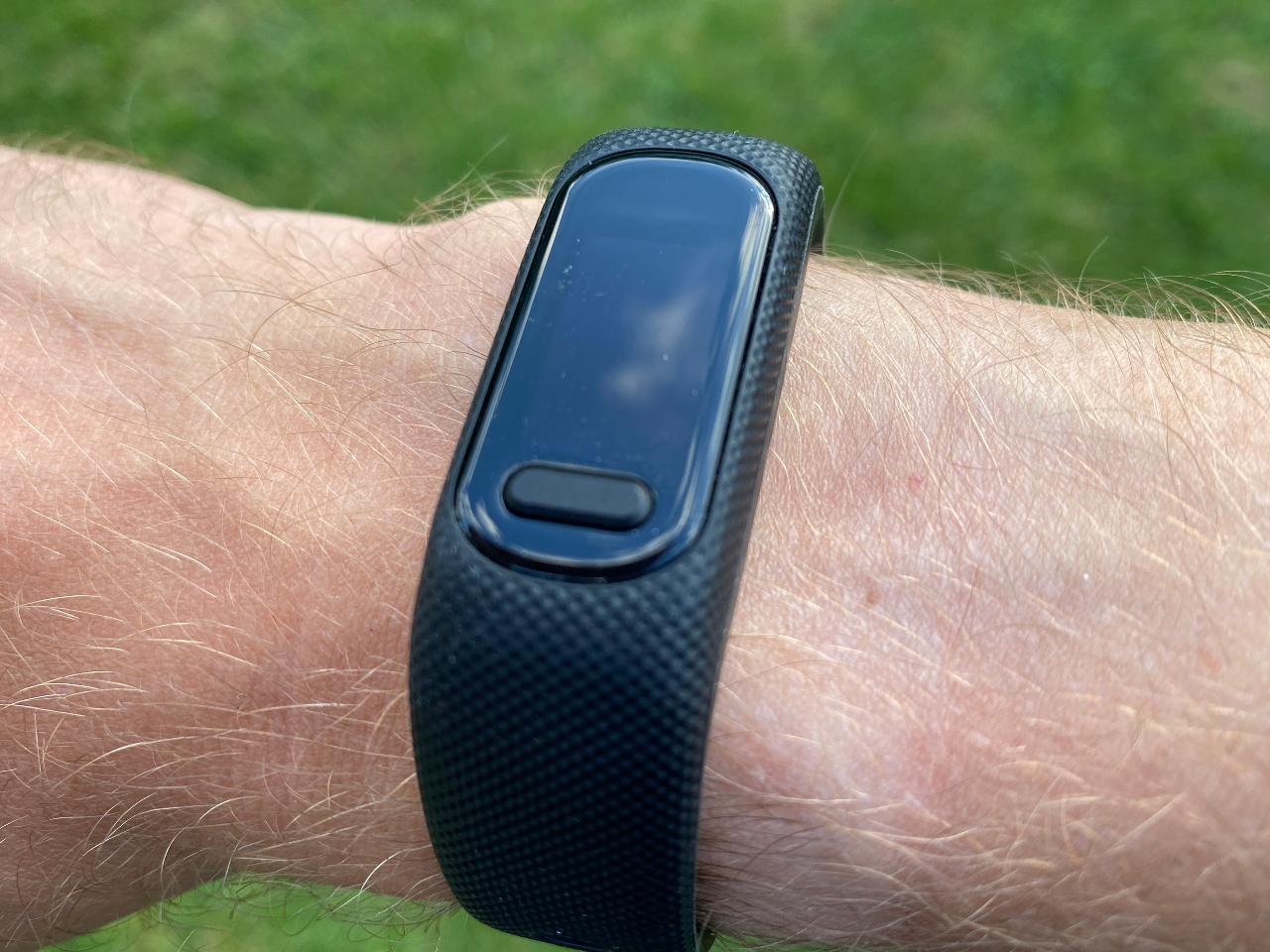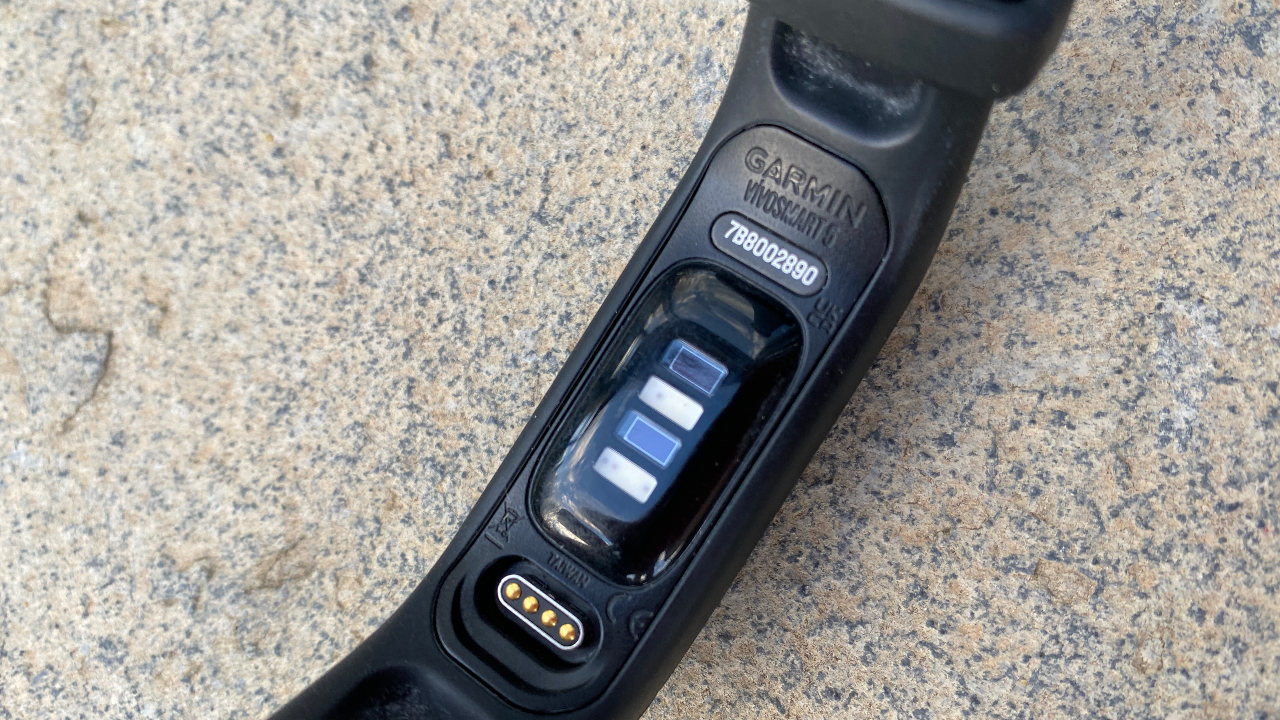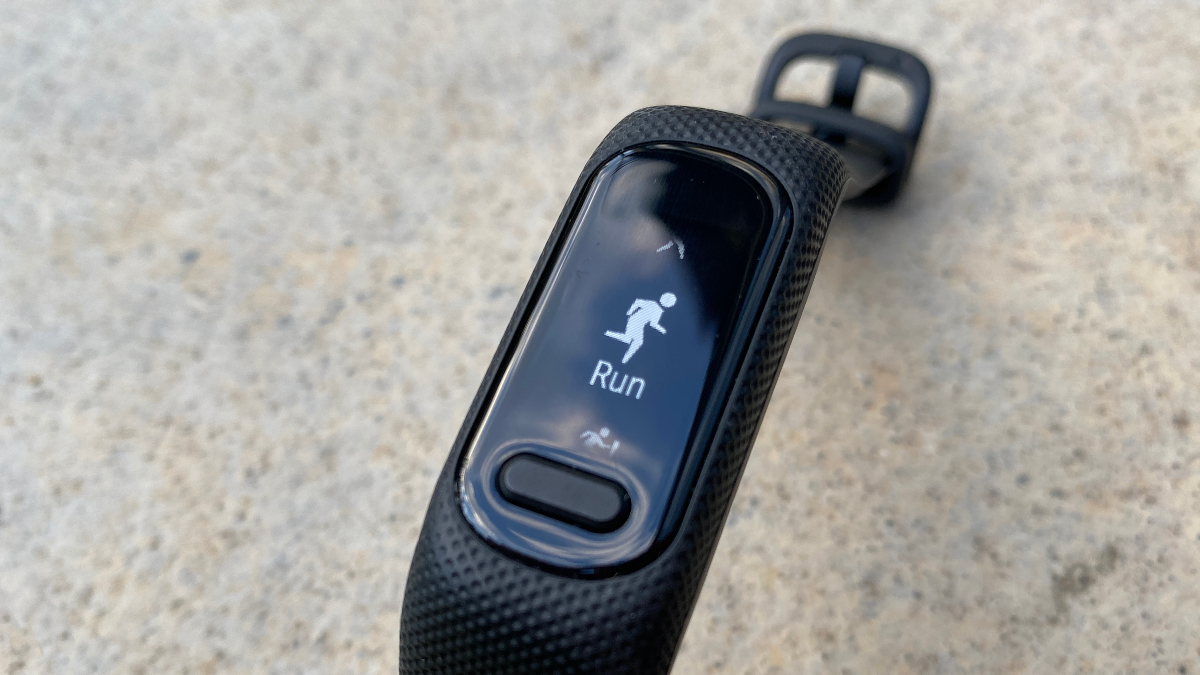Our Verdict
The Garmin Vivosmart 5 offers plenty of insight into your daily activity, but its monochrome display and high price make it hard to recommend.
For
- Insightful activity tracking
- Simple, comfortable design
- Entry-level access to Garmin’s feature options
Against
- Monochrome display
- No GPS
- Inaccurate sleep tracking
- Better-value options available
You can trust Coach
It’s been four years since the launch of the Garmin Vivosmart 4, but even though it was one of the best fitness trackers there was no guarantee Garmin would release a follow-up. In general, tracker bands have given way to smartwatches, and the bands that remain mostly cost less than $100 in the US and £100 in the UK, with devices from Huawei, Honor and Xiaomi undercutting Fitbit and Garmin.
Garmin had options with the Vivosmart 5, then, including not bothering. One was to make it cheaper, another was to overhaul the design to make it more in the style of the Fitbit Charge 5 and add features like GPS. However, in the end, the Vivosmart 5 is a minor update on the 4 and keeps the same price, $149.99/£129.99, which makes it a hard sell given the alternatives available.
Garmin Vivosmart 5 Review: Price And Availability
The Vivosmart 5 is available now and costs $149.99/£129.99. It comes in two band sizes – S/M and L. The Vivosmart 4 remains available for $79.99/£79.99, and you can get the Forerunner 55 running watch for $199.99/£149.99 and the Vivomove Sport for $179.99/£159.99.
Design

The Vivosmart 5 has a 66% bigger screen than its predecessor, 10.5mm x 18.5mm compared with 6.6mm x 17.7mm. The new band also has a physical button, as well as the touchscreen, to make it easier to navigate menus, but loses the aluminium bezel that ran around the outside of the screen on the Vivosmart 4. The Vivosmart 5 is thicker than the 4 and, to me, less appealing aesthetically.
Surprisingly, Garmin has opted for a monochrome display in the 5 rather than upgrading the screen. It’s clear, even if its size makes it hard to see on the move sometimes, but it’s far from the most exciting display and there are many bands available with AMOLED screens.
The Vivosmart 5 has a 5ATM waterproof rating so you can swim and shower with it. It has a heart rate sensor, a pulse oximeter to measure blood oxygen saturation, and an accelerometer, but there’s no built-in GPS – you have to connect to your phone for outdoor activity tracking. Another surprise omission is the lack of a barometric altimeter, which the Vivosmart 4 does have. This means the 5 won’t track elevation or floors climbed.
If you opt for a Vivosmart 5 with S/M sizing you can get it with a black, white or mint silicone band, while the larger size only comes in black. You can swap the band – with Garmin selling six silicone band colours at £24.99 each, but there are no other materials available so you can’t smarten up the look with a leather or metal band.
Sign up for workout ideas, training advice, reviews of the latest gear and more.
Activity And Sleep Tracking

Aside from not recording floors climbed, the Vivosmart 5 is a comprehensive activity tracker, logging your steps, calories burned and active minutes each day. It can also take blood oxygen saturation readings, record your stress and breathing rate throughout the day and has Garmin’s Body Battery measurement, which gives a snapshot of your energy levels rated out of 100, based on things like your recent activity and sleep.
If you’re keeping an eye on hydration levels, you can log the amount of water you’ve drunk, and the band offers Garmin’s women’s health-tracking features. There are inactivity alerts too: Garmin’s Move Bar fills up during time you are stationary and then tells you to get up and move to clear the bar once it’s full.
All your data is available on the band, either on the watch face or by scrolling down from the watch face using the touchscreen, which is responsive and easy to use outside exercise. I found that the blood oxygen saturation readings would fail often and I usually needed to attempt them three or four times before getting a measurement. When I did get a result it was in line with the same reading from the Garmin Epix 2. You can set the pulse oximeter to track all day, during a portion of your sleep, or take spot readings – it’s a battery-intensive feature so I tended to just use it for spot readings.
The sleep tracking delivers the usual performance of a Garmin, in that the Vivosmart 5 tended to overestimate my time asleep each night. It would miss short periods where I would wake up in the night and add on time when I was reading or watching TV. You get your total time asleep, plus a breakdown of time awake and in REM, light or deep sleep on the band, along with a sleep score out of 100. If you keep in mind that the Vivosmart 5 is generous with its tracking, you can get useful info on the trends in your sleep at least.
Each morning you get a report from the Vivosmart 5 with information such as your sleep rating, step target, a weather forecast for your location and an overview of your calendar/schedule.
The Vivosmart 5 impressed me as an activity tracker overall, and though there’s nothing novel about what it offers, it monitors you throughout the day and night and gives clear feedback. However, you get much the same experience with the Vivosmart 4 – which has an altimeter – along with devices from other companies that have better sleep tracking, like Fitbit and Huawei.
Sports Tracking
You can choose up to 10 sports modes to show on the Vivosmart 5 from a range of 14 in the Garmin Connect app. Most common types of exercise are available, including strength training with rep counting, and there are catch-all “other” and “cardio” modes you can use if your preferred sport isn’t there.
Built-in GPS would have been a useful upgrade for the Vivosmart 5, especially since the Vivosport band that does have GPS doesn’t seem to be getting updated any time soon. Fitbit now offers GPS in its Charge 4 and Charge 5 bands, and it’s on cheaper options from the likes of Huawei. It’s not essential, though, and the band quickly connects to your phone at the start of outdoor activities to use its GPS.
Unfortunately, the results were not accurate during my testing. The distance logged by the Vivosmart 5, on outdoor runs in particular, consistently came up longer than the Garmin Epix 2, which has proven to be the most accurate device I’ve used in the last year. For the most part the difference wasn’t huge, so I’d say the Vivosmart 5 is fine for logging your runs and cycles, but you will probably have the odd activity where the distance is wrong.

The heart rate monitor was accurate during my testing, generally matching up well to the reading of a chest strap, even during interval sessions with sharp spikes and drops in my effort. It wasn’t perfect and would sometimes miss spikes, and you can’t pair an external monitor to the Vivosmart 5 to get more accurate results, but for the most part it was good enough to keep tabs on my effort levels in training sessions.
You can customise two of the three data fields shown during activities, though the middle one is locked to a timer and there aren’t that many options on what you can choose to show. It’s not all that easy to see your stats during activities unless you are still – the timer and the heart rate gauge screen were the only metrics I found it was possible to read at a glance. A brighter, colour display would help here.
A couple of notable features added to the Vivosmart 5 that weren’t on the 4 are Garmin’s Livetrack, and Incident Detection, which can sense a fall during activities like running and cycling and notify pre-selected contacts.

To pause or end activities you have to hold the button down for a few seconds, which is just enough of a faff (compared with clicking a button) that I generally left activities running until looking to end them. The screen was also unresponsive at times during sweaty runs, with my swipes failing to register. Overall, the Vivosmart 5 is best used to log activities rather than check stats during them.
The Vivosmart 5 is an activity tracker first and a sports tracker second, and it’s capable of logging your training for you to review afterwards, but anyone looking for a high level of detail and on-the-go information will be better served by a sports watch or a band with a brighter, larger display.
Smart Features
The Vivosmart 5 will display your notifications and calendar appointments, and you can also control music playback on your phone using it. Notifications are hard and time-consuming to read on the small screen, because you have to wait for text to scroll across, but this is par for the course with bands in general.
Battery Life
As with the Vivosmart 4, the 5 lasts up to seven days on a charge, although that number comes down if you use the blood oxygen saturation tracking at all times. I found the band lasted six days on a charge reliably – even when tracking outdoor runs most days with the pulse oximeter turned off.
Is The Garmin Vivosmart 5 Worth It?
The Vivosmart 5 is a head-scratcher, especially from Garmin which is usually adept at pricing its products in line with the features they offer and the competition from other brands. The Vivosmart 5 is too expensive for what it does, and doesn’t offer much of an upgrade on the Vivosmart 4, which is now available for significantly less and has a better design in my opinion.
Outside of Garmin you’ll find better-looking devices from Fitbit, with the Charge 5 having a more impressive design and built-in GPS, though I didn’t find it the most accurate tracker. Huawei’s new Watch Fit 2 band is also £130 and has a bright AMOLED screen, built-in GPS with multi-band tracking, and a host of other features that make it a better sports tracker than the Vivosmart 5. Fitbit and Huawei also offer more accurate sleep tracking, and have cheaper bands that offer most of the same features as the Vivosmart 5.
The Vivosmart 5 is a good entry-level fitness tracker that gives you access to distinctive Garmin features, like BodyBattery or LiveTrack, but even if that’s all you want then I’d say the Vivosmart 4 is the better option and has a price more suited to the features it offers.

Nick Harris-Fry is a journalist who has been covering health and fitness since 2015. Nick is an avid runner, covering 70-110km a week, which gives him ample opportunity to test a wide range of running shoes and running gear. He is also the chief tester for fitness trackers and running watches, treadmills and exercise bikes, and workout headphones.

